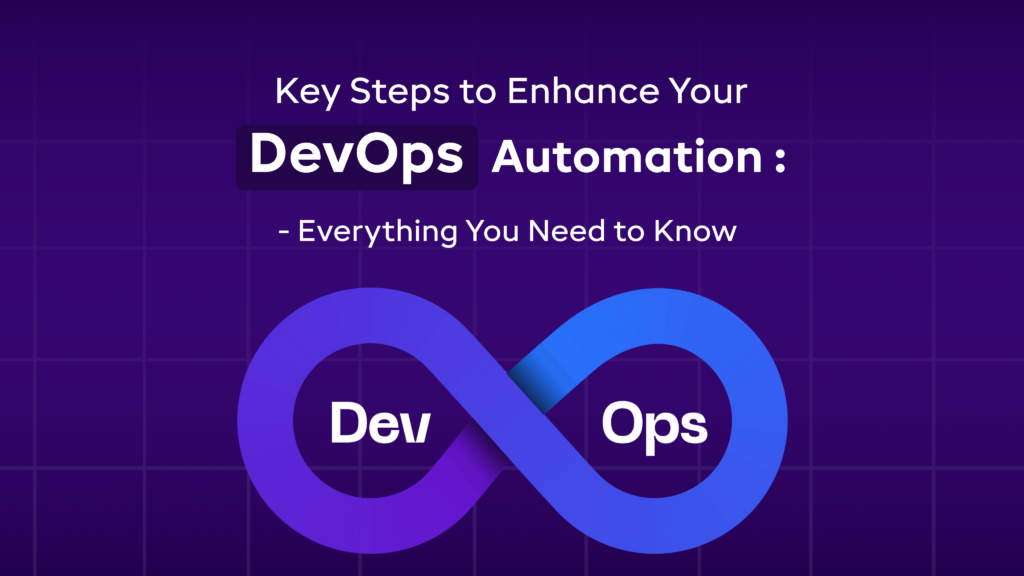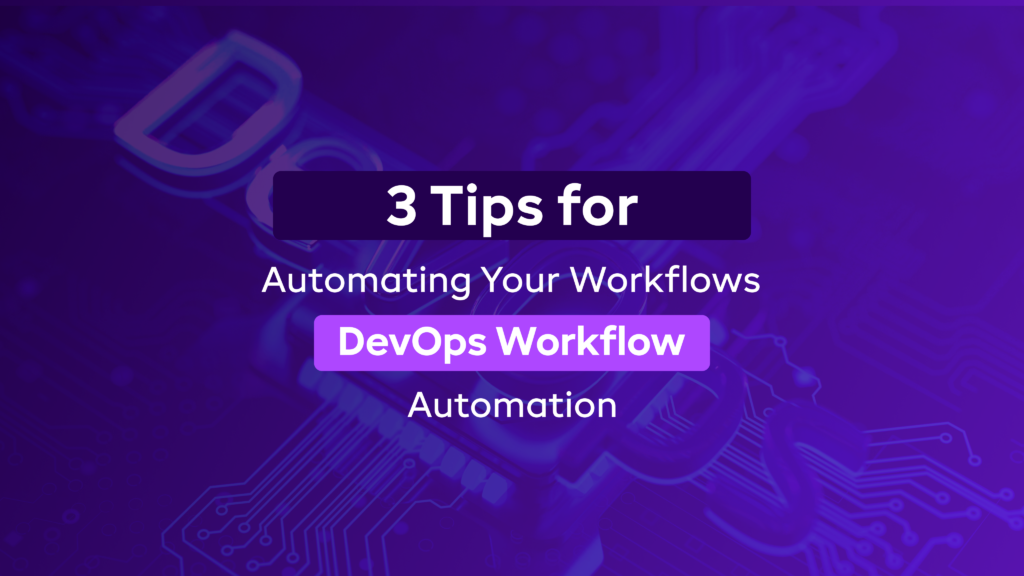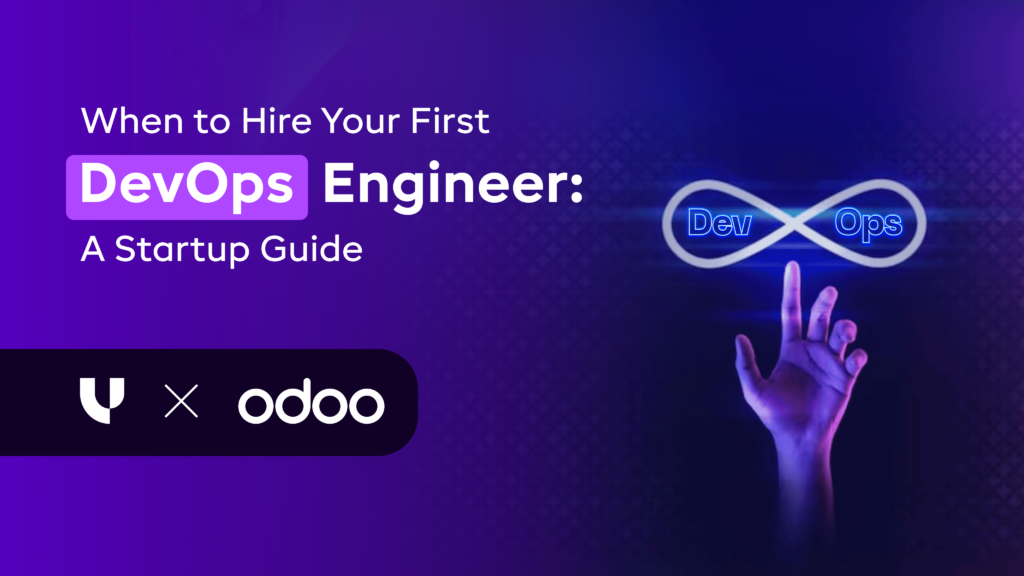Key Steps to Enhance Your DevOps Automation – Everything You Need to Know
Published on July 24th 2025

Introduction
In today’s fast-paced development environment, delivering software quickly is no longer a competitive advantage, it’s a baseline expectation.
DevOps automation has emerged as the cornerstone of modern software delivery, helping teams accelerate releases, reduce manual errors, and maintain consistency across development and operations.
But automation isn’t just about scripts and pipelines. It’s about building a cohesive system where infrastructure, testing, deployment, and monitoring all work seamlessly together. Whether you're just starting or scaling an enterprise-grade CI/CD pipeline, understanding the right steps to enhance your DevOps automation can unlock new levels of efficiency and resilience.
This article breaks down the core stages, tools, and best practices every team should follow to optimize their DevOps workflow.
What Is DevOps Automation?
DevOps automation is the use of tools and scripts to automate repetitive work in software development (Dev) and information technology operations (Ops). Different DevOps service company use it to enable teams to optimize procedures, minimize mistakes, and release software more quickly and consistently.
DevOps automation delivers consistent and repeatable results by automating processes like as code integration, testing, and deployment. DevOps automation is a critical component of faster development cycles in current technology contexts.
Why Is DevOps Automation Important?
- A. Speed and Efficiency: This automation helps streamline processes, allowing teams to launch and iterate more quickly while maintaining quality.
- B. Resource Optimization: Automation frees teams from manual activities, allowing them to focus on more important work and increase production.
- C. Improved Collaboration: Creates a fluid workflow between development and operations, fostering a culture of shared accountability.
- D. Error Reduction: Automating repeated operations lowers the likelihood of human mistake, resulting in more reliable deployments and fewer production difficulties.
Want to start a project with us?
Empowering businesses to achieve greatness through strategic guidance and innovative solutions.
Book A Demo
3 Key Steps to Enhance DevOps Automation
Step 1: Create and Configure CI/CD Pipelines.
CI/CD pipelines are the foundation of DevOps automation, allowing teams to automate code integration, testing, and deployment.
Choose a CI/CD Tool: Select a technology that interacts seamlessly with your development environment, such as Jenkins, GitLab CI, or CircleCI. GitLab CI, for example, combines version control and automated pipelines to simplify development operations.
Define pipeline stages: Structure your pipeline into crucial stages:
Plan: Define the project's goals and scope.
Build: Compile the code and run consistency checks.
Test: Run automated tests to ensure quality and functioning.
Release: Prepare the code for deployment.
Deploy: Automatically push code to production.
This systematic technique identifies bugs early on, improves code quality, and speeds up deployment.
- Automate Testing: Include automated testing to guarantee functionality, security, and quality at every turn.
- Simplify Communication: To cut down on human labor and increase stakeholder transparency, use Instatus status pages to automatically convey deployment progress and changes.
- Configure Deployment: Automate the process of deploying to production or staging environments. To lower risk and guarantee seamless rollouts, take into account blue-green or canary deployments.
Confused about the approach and how it resolves operations? Connect with premier DevOps consulting services and solutions today!
Step 2: Implement Infrastructure as Code (IaC)
IaC automates infrastructure provisioning and administration for your DevOps infrastructure, maintaining consistency across environments.
Choose an IaC Tool:
Depending on your cloud provider and infrastructure requirements, you can use Terraform, AWS CloudFormation, or Ansible. Terraform, for example, enables teams to create infrastructure using declarative code, ensuring that it is repeatable and consistent.Define and Version Infrastructure:
Use IaC tools to specify infrastructure components (for example, servers and networks) and save settings in version control systems such as Git to monitor revisions and handle rollbacks.Automate Provisioning:
Use IaC scripts to provision and configure environments (such as staging and production). This go-to option for DevOps service providers minimizes manual mistakes and speeds up deployments.Security and Compliance:
Integrate automated security and compliance tests to verify infrastructure satisfies organizational standards prior to deployment. Integrate Notifications: Using Instatus connections with platforms like Microsoft Teams, you can automatically alert teams of infrastructure changes that may affect service availability, keeping everyone on the same page.Step 3: Automate Monitoring and Incident Response
Manage system health in a proactive manner by automating monitoring, issue identification, and incident response.
a. Set up automated monitoring:
Use monitoring tools to keep track of crucial metrics including response time, error rate, and system resource use. Automated health checks are performed at regular intervals to discover anomalies before they affect end users.b. Use Instatus Monitors API:
Use the Instatus Monitors API to automate status checks and measure system uptime. Integrate with other monitoring tools such as Site24x7 and Pingdom to gain real-time insights and keep stakeholders informed without requiring manual adjustments.c . Configure Incident Notifications:
Use connections with Slack or PagerDuty to notify the appropriate teams when events arise. Automate status updates to reflect issue progress while maintaining clear communication with internal teams and external users.d. Automate Post-Incident Analysis:
identify recurrent issues, and enhance future system reliability. Terraform's integration with AWS SNS and PagerDuty optimizes alerting operations.Automated monitoring and incident response allow ongoing, proactive control of system health, resulting in increased uptime and transparency across teams. Witness the change premier DevOps services in India can bring to your operation.
Best Practices for DevOps Automation
#1 Focus on continuous improvement
Automation is not a one-time setup. Regularly assess and update your automated workflows to keep them current and efficient as the team, tools, and technology change.
#2 Ensure strong collaboration across teams
Encourage collaboration among development, operations, and security teams when deploying automation. Clear communication leads to seamless operations and improved alignment with corporate goals.
#3 Prioritize reliability over complexity
Prioritize automating the most crucial and repetitive processes first. Do not try to automate everything at once; instead, start small and prioritize stability before increasing complexity.
#4 Monitor automation performance
Continuously monitor the performance of your automated systems. Identify failures, bottlenecks, and places where automation may be improved for faster and more reliable results.
#5 Build security into the automation process
Automate compliance verifications as part of your CI/CD cycle. This guarantees that security is a continuous priority, not an afterthought.
#6 Empower teams via training and ownership
Invest in training your personnel on automation technologies and best practices. Empower them to take control of the automation process, so they can better manage and optimize the system.
Conclusion
Enhancing DevOps automation is not a one-time task, it’s a continuous journey of refinement, iteration, and alignment with evolving business goals. By focusing on key steps such as environment standardization, robust CI/CD pipelines, infrastructure as code, and automated testing, teams can significantly boost speed, reliability, and scalability.
Organizations that approach DevOps automation with a clear roadmap and the right toolchain are better positioned to adapt quickly, reduce risk, and foster a culture of innovation. The result is not just faster releases but smarter, more resilient software delivery at scale.
Ready to scale? Connect with Uncanny for seamless DevOps consulting services today!

About Author

